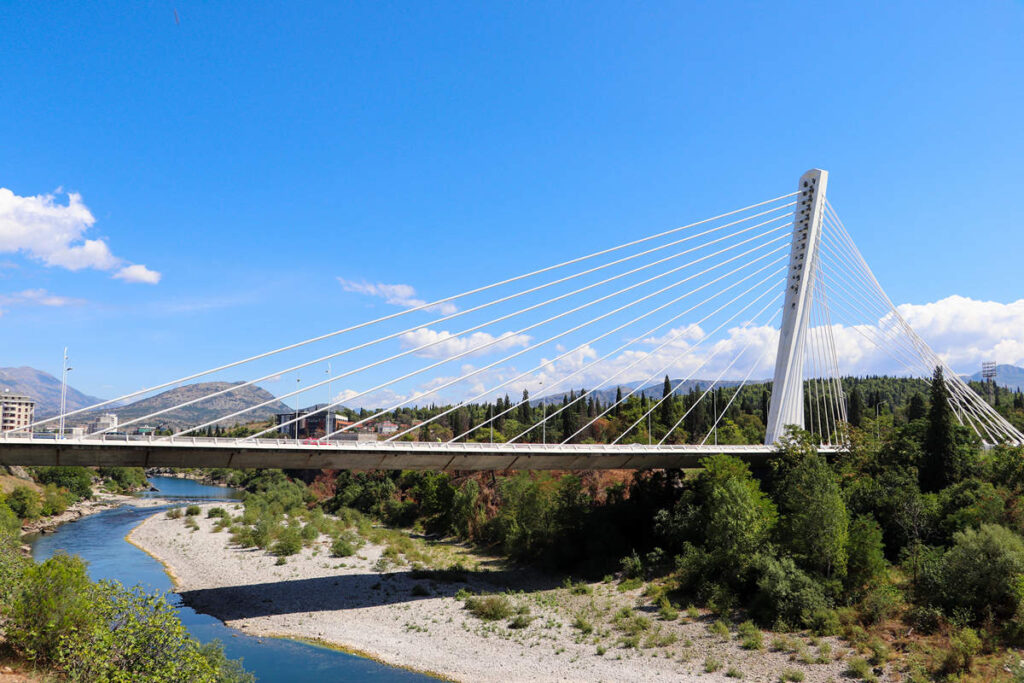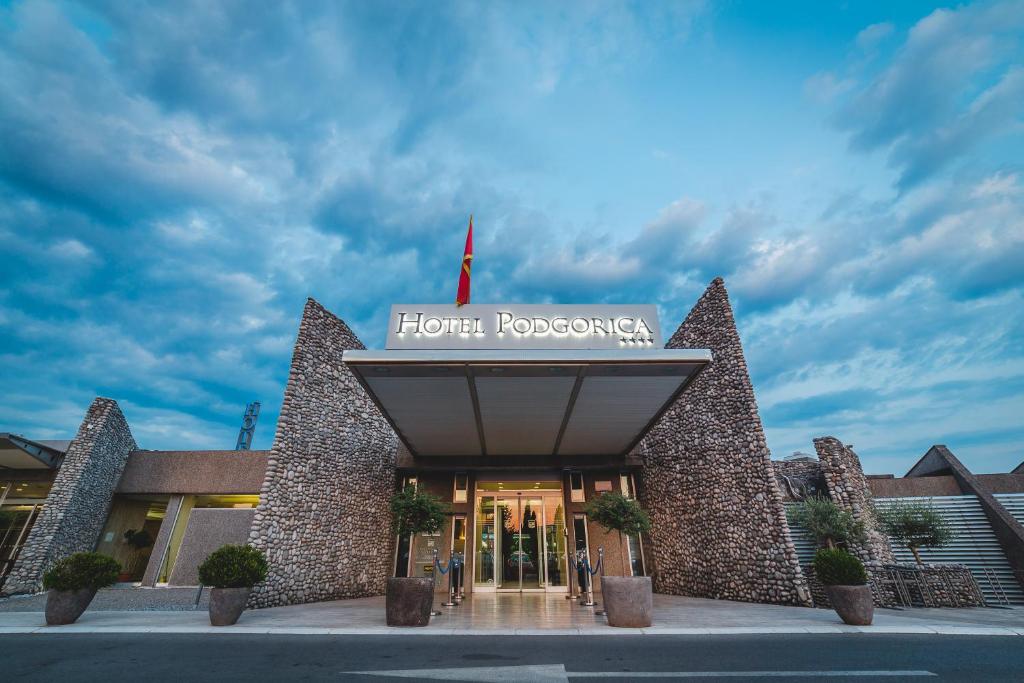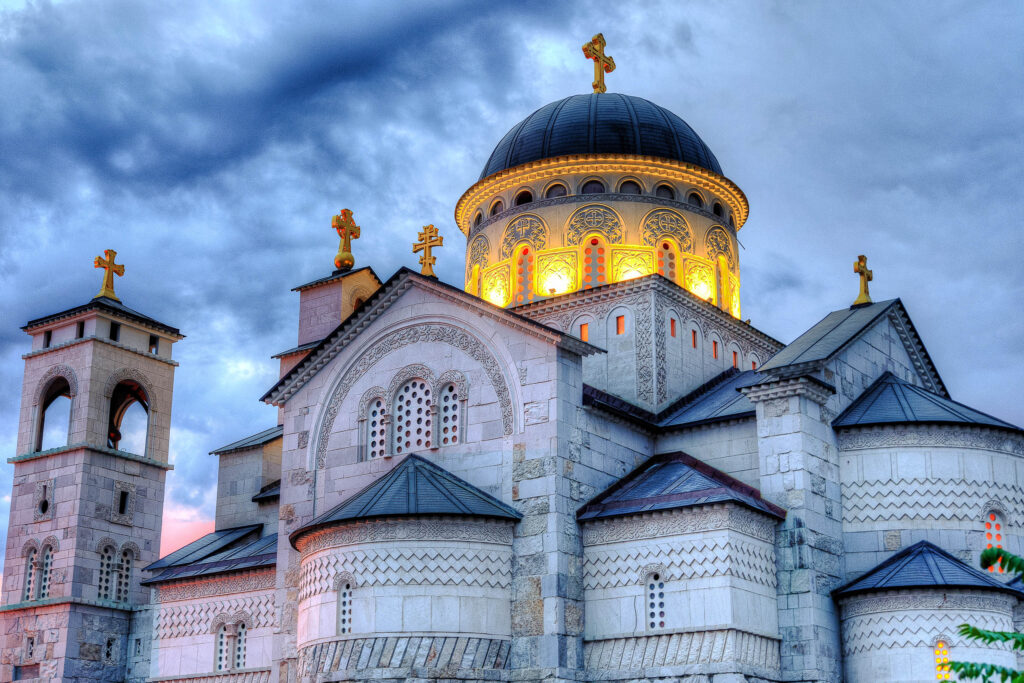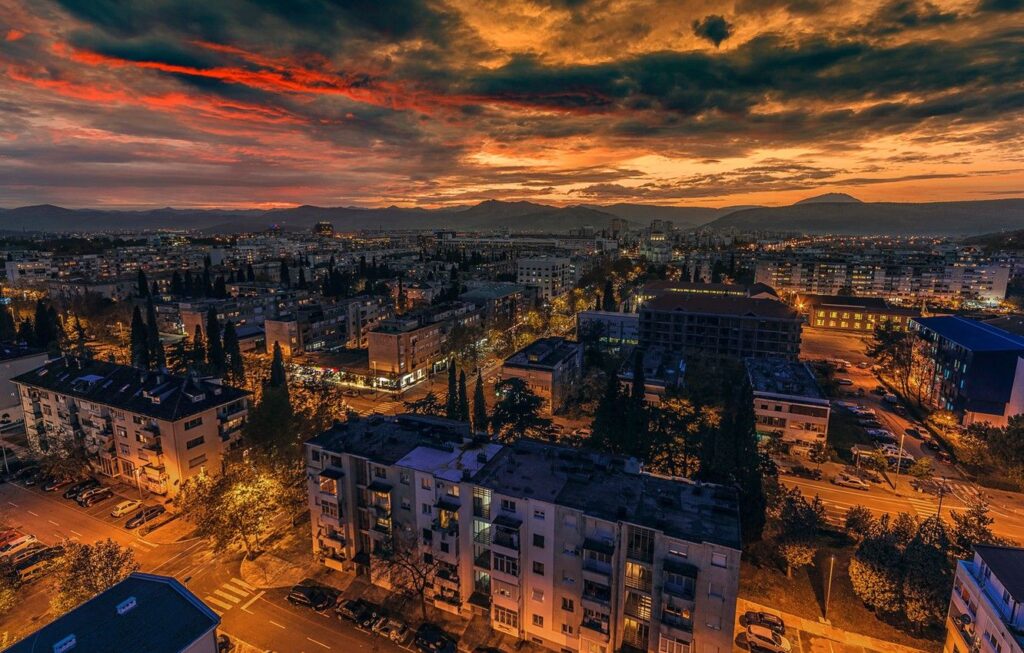Podgorica is the capital and largest city of Montenegro.
The city was known as Titograd between 1946 and 1992—in the period that Montenegro formed, as the Socialist Republic of Montenegro, part of the Socialist Federal Republic of Yugoslavia (SFRY)—in honour of Marshal Josip Broz Tito.
The city is close to winter skiing centers in the north and to seaside resorts on the Adriatic Sea.
Cityscape
Podgorica’s mixture of architectural styles reflects the turbulent history of the city and country: as one régime replaced another, the corresponding style was introduced.
As part of the Ottoman Empire until 1878, Podgorica has some examples of Ottoman architecture. The oldest parts of the city, Stara Varoš (Old town) and Drač is typical of this, with two mosques, a Turkish clock tower and narrow, winding streets.
When the city was incorporated to Montenegro, the urban core shifted to the other bank of the Ribnica River, where the town developed in a more European style: wider streets with an orthogonal layout. This part of the city is today traditionally regarded as the city center and is called Nova Varoš (New town)
During World War II, Podgorica was almost razed to the ground, being bombed over 80 times. After liberation, rebuilding began as in other cities of the communist-ruled SFRY. Mass residential blocks were erected, with basic design typical of Eastern bloc countries. All that part of the city on the right bank of the Morača River was built this way.
The main contemporary traffic arteries were laid out during this period, which extended the orthogonal street layout of the city center, to the south and west. Residential and infrastructural developments in the SFRY era have mostly shaped the layout of today’s Podgorica and accommodated the unprecedented population growth that followed World War II.
A major advance in Podgorica architecture began in the late 1990s and, since then, the face of the city has changed rapidly. Residential and business construction are proceeding rapidly, incorporating contemporary glass-and-steel architectural trends. In an effort to create a recognizable and modern state capital, city officials are routing significant investments in the city’s public spaces. Thus, the city has gained entirely new squares and some monuments. New landmarks include the Hristovog Vaskrsenja orthodox temple and the Millennium Bridge, the main feature of the Podgorica skyline.
Culture
Podgorica is home to many Montenegrin cultural institutions and events.
It hosts the Montenegrin National Theatre and a number of museums and galleries. The Montenegrin National Theatre is the most significant theatre not only in Podgorica but in all of Montenegro. Podgorica is also host to the City Theatre (Gradsko pozorište), which includes the Children’s Theatre and the Puppet Theatre. Although not as rich in museums and galleries as the historic royal capital Cetinje, there are several noteworthy museums:Cathedral of the Resurrection of Christ interior.Former residence of King Nikola I Petrović, today an art gallery.
- The Podgorica City Museum (Muzej grada Podgorice) preserves Podgorica’s rich heritage. Founded in 1950, it has four categories: archaeological, ethnographic, historical, and cultural-historical. It houses artifacts that date back to the Roman and Illyrian eras.
- The Archaeological Research Centre (Centar za arheološka istraživanja) was founded in 1961. Its mission is to gather, classify, restore and display archaeological sites.
- The Marko Miljanov Museum (Muzej Marka Miljanova) in Medun shows life in 19th century Montenegro.
- The Natural History Museum (Prirodnjački muzej) displays specimens of Montenegrin flora and fauna. This museum has no exhibition space of its own, despite many proposals and initiatives to build one.
There is a notable art gallery in the Dvorak Petrovića (Petrović Castle) complex in Podgorica’s largest public park. King Nicholas‘s castle, Perjanički Dom (House of the Honour Guard), castle chapel and surrounding buildings were converted to an art gallery in 1984. Since 1995, it has been part of the Modern Arts Centre (Centar savremenih umjetnosti) and houses approximately 1,500 works of art. The historic Cinema of Culture (Kino Kultura), which was founded in 1949, was closed in November 2008 due to continuous financial losses it generated. It was the only cinema in the city for 6 decades. The building of the former cinema will be converted to host the Podgorica City Theatre. Shortly after its closure, a Ster-Kinekor (later acquired by Cineplexx) 6-screen multiplex cinema opened at Delta City shopping mall.
A significant cultural institution of over fifty years’ standing is the Budo Tomović Cultural-Informational Centre (KIC Budo Tomović). It is a public institution that organizes various artistic events, including Podgorica Cultural Summer (Podgoričko Kulturno Ljeto), FIAT – International Alternative Theatre Festival (Festival Internacionalnog Alternativnog Teatra), DEUS – December Arts Scene (Decembarska Umjetnička Scena).





